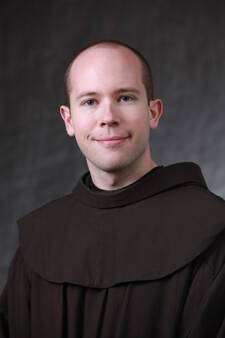During Pope Francis’ recent apostolic visit to the United States I, like so many who were glued to television coverage or who made the pilgrimage to glimpse him in person, was captivated by the words and gestures, both large and small, that captured the attention and imagination of this nation and the whole world. From riding around in the visually humble Fiat to delivering poignant words addressed to Congress, it seemed as if everything Pope Francis said or did was destined to be of historical importance.
And yet, despite the abundance of notable encounters, speeches and actions that week, I found that I kept returning in my memory to an earlier image of him from last summer.
The image is of Pope Francis having lunch. Yep, that’s it. Just lunch.
Sitting at an ordinary table in what appeared to be a cafeteria like any one of thousands around the world, the bishop of Rome sat in his white cassock amid uniform-clad employees of the Vatican pharmacy and facilities crew. And he ate his lunch.
That Pope Francis had lunch on July 25, 2014, is not what is really interesting to me. Nor is it that he chose to dine with employees of the Vatican. What is amazing was the way the world responded to this meal. Photographs provided to the Associated Press by the Vatican newspaper L’Osservatore Romano went “viral” on the Internet and appeared on the front pages of many of the world’s most well-respected, international newspapers, including The New York Times.
There was no major story accompanying the photograph: no peace-treaty brokered, no important speech delivered. It was just lunch. So what was the big deal?
It seems that the big deal was that popes—like presidents, prime ministers and other world leaders—simply weren’t supposed to be bothered with ordinary, everyday people. According to this logic, lunches with the pope were occasions reserved for important discussions of an ecclesiastical or international relations issue with power players, who have their own entourages. That Pope Francis would elect to simply have lunch with just the entourage, the supporting cast, without any “important” people reflects the apparently unusual priorities of this bishop of Rome. Nobody was vetted in advance; no political favors were necessary to get in.
But such priorities would not have seemed strange to a certain first-century Jew from Nazareth. In fact, with the possible exception of an occasional physical miracle, most of Jesus’ approximately three years of public ministry was spent without much fanfare or unusual behavior and with ordinary, everyday people. He spoke to them, even when others thought he shouldn’t; he touched them, even when religious convention forbade it; he welcomed them, even when they were of another community or faith; he invited them to be his followers, even when there were smarter, more organized and more loyal people out there. And Jesus had many lunches with them, the many anonymous people of no historical significance. Despite imaginations that suggest otherwise, most of Jesus’ earthly life and ministry did not include grand gestures, fancy settings or important people.
There is an important lesson about Christian discipleship here. The Gospel is only lived out during the seemingly little things of the everyday. In office cubicles, on subway cars, along rural highways, at home or at play—these places are where the quotidian reality of Christian life unfolds, or doesn’t, according to our choices. Too often we look to saints or other exemplars of Christian living and romanticize their famous actions or behaviors. We forget that Francis and Clare of Assisi, Ignatius Loyola, Catherine McAuley and Dorothy Day all woke up each morning, went to bed each evening and tried their best to follow Christ during the hours in between. What makes them models of Christian life is not some singular display of faithfulness but instead the culmination of a lifelong effort to make the little things, like lunch or work, moments of encounter with others that help proclaim the good news of God’s love to the world.
Ever since that photo was published last summer, and even more since Pope Francis’ visit, I have been trying to imagine a world in which simple acts of humility, kindness and concern for others were more commonplace. Perhaps then, such behavior, even by a pope, would not become front-page news.








